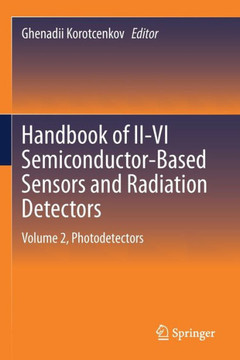
World Scientific Publishing Company
Semiconductor-based Sensors
Product Code:
9789813146723
ISBN13:
9789813146723
Condition:
New
$188.63

Semiconductor-based Sensors
$188.63
This book provides a comprehensive summary of the status of emerging sensor technologies and provides a framework for future advances in the field. Chemical sensors have gained in importance in the past decade for applications that include homeland security, medical and environmental monitoring and also food safety. A desirable goal is the ability to simultaneously analyze a wide variety of environmental and biological gases and liquids in the field and to be able to selectively detect a target analyte with high specificity and sensitivity. The goal is to realize real-time, portable and inexpensive chemical and biological sensors and to use these as monitors for handheld gas, environmental pollutant, exhaled breath, saliva, urine, or blood, with wireless capability. In the medical area, frequent screening can catch the early development of diseases, reduce the suffering of patients due to late diagnoses, and lower the medical cost. For example, a 96% survival rate has been predicted in breast cancer patients if the frequency of screening is every three months. This frequency cannot be achieved with current methods of mammography due to high cost to the patient and invasiveness (radiation). In the area of detection of medical biomarkers, many different methods, including enzyme-linked immunsorbent assay (ELISA), particle-based flow cytometric assays, electrochemical measurements based on impedance and capacitance, electrical measurement of microcantilever resonant frequency change, and conductance measurement of semiconductor nanostructures, gas chromatography (GC), ion chromatography, high density peptide arrays, laser scanning quantitiative analysis, chemiluminescence, selected ion flow tube (SIFT), nanomechanical cantilevers, bead-based suspension microarrays, magnetic biosensors and mass spectrometry (MS) have been employed. Depending on the sample condition, these methods may show variable results in terms of sensitivity for some applications and may not meet the requirements for a handheld biosensor.
| Author: F. Ren, S. J. Pearton |
| Publisher: World Scientific Publishing Company |
| Publication Date: Oct 18, 2016 |
| Number of Pages: 480 pages |
| Language: English |
| Binding: Hardcover |
| ISBN-10: 9813146729 |
| ISBN-13: 9789813146723 |





